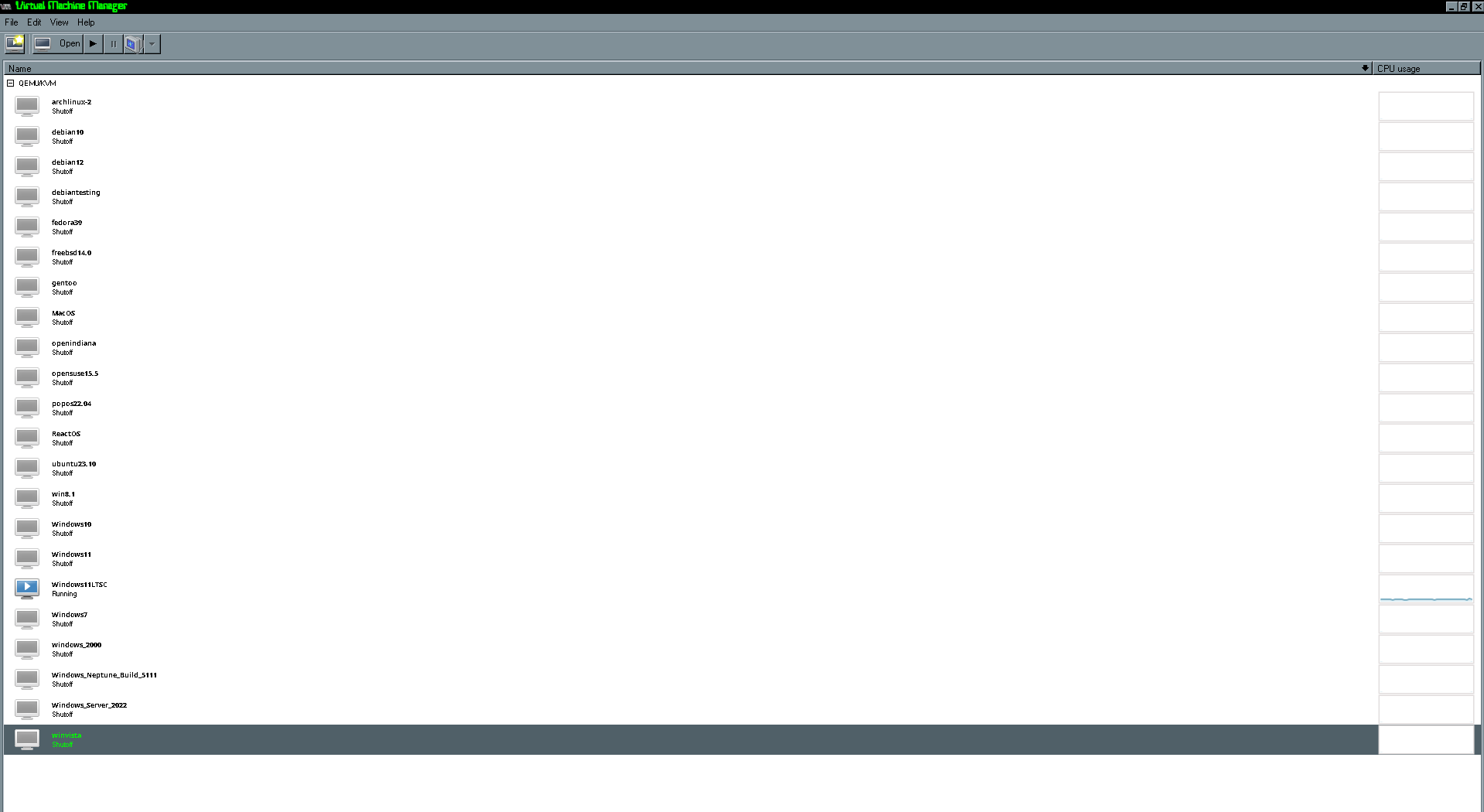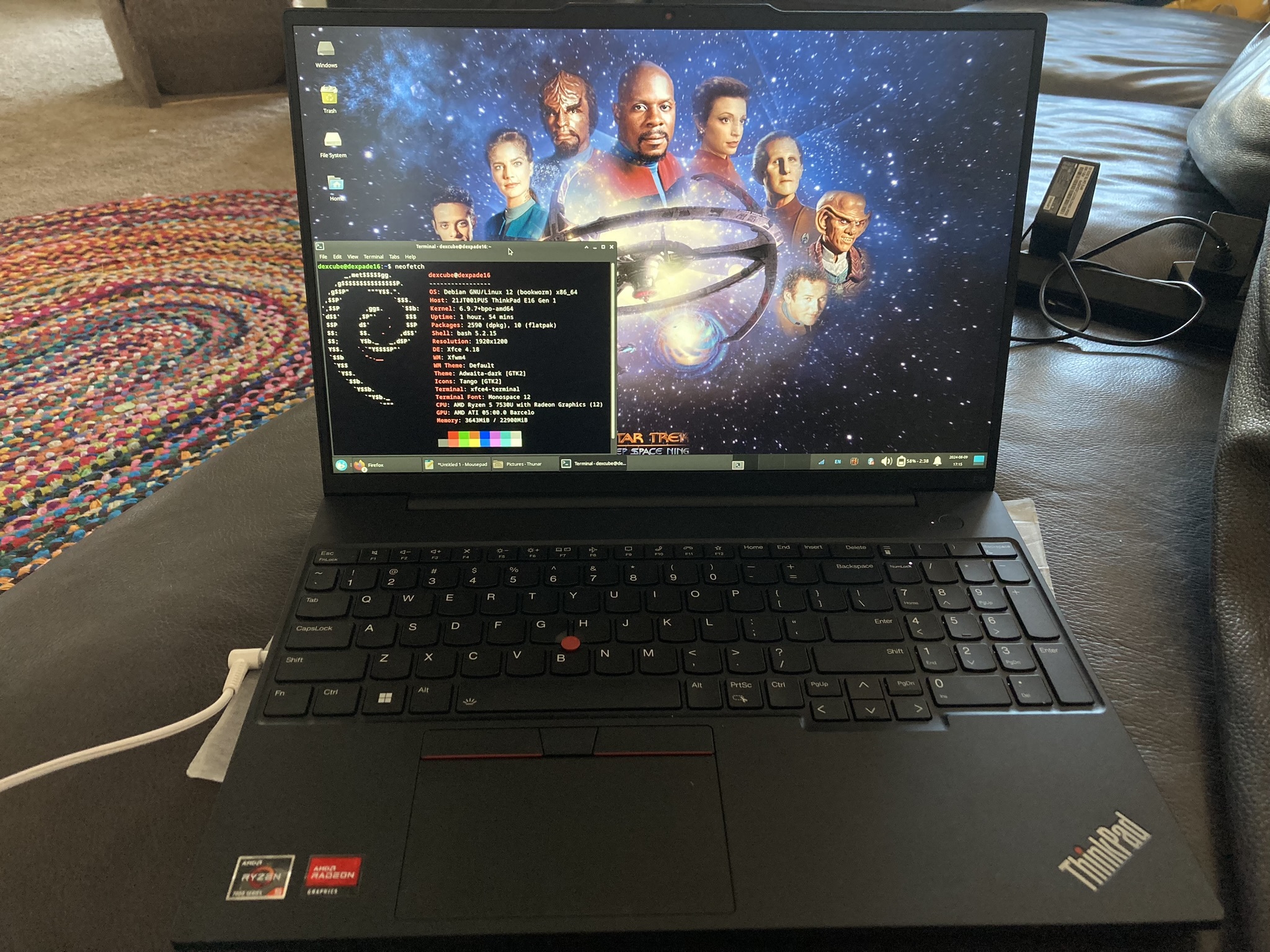The password thing is pretty based, honestly. What you say is probably not possible, as the NT kernel would have to support LUKS, I'm pretty sure, which it doesn't.
data1701d
Precisely. I just use probably as a catch all.
It really shouldn't matter. I know what they're talking about and it's true.
It's not malicious or "ransomware", and this is perfectly normal, default behavior for most devices - both macOS and Windows implement full disk encryption in a default install these days, and your key is almost always in your Microsoft Account on the Microsoft website. While Microsoft does a lot of crap wrong, in this case, Windows's failure to decrypt under GRUB is security features actually kind of doing their job. Basically, trying to boot Windows through GRUB confuses the TPM, causing it to not want to give the keys in case the Windows boot partition has been tampered with by bad actors. Thus, you have to boot directly through Windows Boot Manager, not GRUB
Also, secure boot and TPM aren't just some conspiracy by Microsoft to block Linux; they are attempts at implementing legitimately necessary security features. Full disk encryption supported by correctly implemented secure boot and an encryption chip are essential to having modern security. Linux is not blocked by TPM and Secure Boot; it is certainly possible for Linux distributions to take advantage of them to enhance their own security. I have implemented automatic LUKS full disk encryption that similarly fails to unlock if the partition has been tampered with on my Debian install. In theory, they can actually be used to help improve your security.
That is not to say I think TPM and secure boot are good, though. The really obnoxious thing about secure boot is that all the certificates are controlled by Microsoft rather than a standards body or a group of certificate authorities. While so far, Microsoft has kept it relatively open by providing the third party CA and the shim binary in order to avoid having its neck snapped by the FTC, considering the current administration, we don't know how much longer they'll keep it up, and they could actualize the much-feared blocking of Linux.
The other big problem with TPMs and secure boot is that often, there are so many different implementations and frequently major security flaws in their implementations that weaken their protection. A typical petty thief stealing your laptop still probably won't be able to decrypt your drive, but a nation state can probably find a way. It doesn't help that Windows doesn't encrypt communication between the CPU and the TPM (luckily, the Linux kernel does that by default). Despite these issues, I'd say TPM and Secure Boot is better than nothing for most devices; not using them (EDIT: or a non-M$-controlled alternative, like a memorized drive password AND/OR FIDO keys, which may be better) at least in part means your device is more vulnerable to physical access and bootkit attacks than even most Windows laptops, and they are often the only tools at your defense
EDIT: An addendum: Now the really smart thing I've heard people do is to keep the boot partition on a flash drive (possibly with a keypad or biometrics) that you keep with you at all times.
I'm agreeing with other people; there's probably a drive issue that the shop didn't catch.
On my machine, those two services that take 30 seconds for you do not take nearly that long for me. dev-mapper-DebianVolume\x2dDebianMain.device (which is equivalent to dev-mapper-data\x2droot.device; our drives are just called different things) only takes 1.074 seconds for me, while lvm2-monitor.service only takes 357 milliseconds.
I've only ever seen Linux boots take this long when either a drive failed or I accidentally formatted a drive that's in my fstab, causing it to fail to mount and eventually landing me in a recovery shell. At that point, I'd either use the recovery shell or a USB to edit the fstab.
Next time you boot in, check to see if all your drives are showing up, check disk health, etcetera. Also, although this likely won't solve the problem, check that your drive connections are well-seated.
Depending on how your system is set up, DRI_PRIME might use a different number. Generally, you check with glxinfo.
This is a relatively new CPU. You might struggle on Ubuntu as well. As much as I love Debian, something like Fedora might be better.
It may be possible to get Debian running, though - either run Debian Testing or install a Backports kernel and Mesa. Were you failing to boot Debian, or did you just struggle after getting it installed?
Either way, I just don't recommend Ubuntu.
A suggestion: if you can't find anything else for them, keep them around as parts machines.
There should still be useful components in them. For instance, a lot of the Wi-Fi modems may still be perfectly good for other things as long as they're mini-PCIE (I don't know if they use those in desktops). They may not be the absolute newest standard, but should still do the trick; it certainly came in handy when my sister's laptop's Wi-Fi modem decided to be a brat - I just swapped in an Intel modem from a laptop from 2016.
I might not fully trust the SSDs or the HDDs, but they can still have their uses. There's one SSD from an old desktop that I currently have hooked up to my Wii U.
From what I can tell, people have supposedly run LLMs on it with not great, but not necessarily horrible results; Certainly has to be better than those clickbait posts about people running llama on Windows 98.
A lot of budget desktops from the past decade can at least match, if not significantly outclass a Raspberry Pi 5. Heck, that barely beats my i5 from 2009, and the performance of CPUs has increased significantly since then.
Then again, I'm not particular interested in gen ML, self-hosted or not, so I don't really care.
Although seem to have solved your main issue, I have a few comments on your Steam Run command.
For one, I think VK_DRIVER_FILES=/usr/share/vulkan/icd.d/nvidia_icd.x86_64.json and your prime-run command are redundant - both of those will do the same thing. Personally, I use neither of those and instead do something like DRI_PRIME=1 %command% (obviously not this exactly always, as there might be other flags, but roughly the idea).
In general, I’d just recommend seeing which of these command flags you really need, because I see people in ProtonDB getting away with much simpler launch commands.
Every package manager you mention is shit.
Every package manager ~~you mention~~ is s***.


I was talking less install a bootkit and giving it back to be and more just straight-up stealing the laptop and seeing if they can get any personal info they can sell before formatting it and eBaying it.
Still, your points are totally valid.